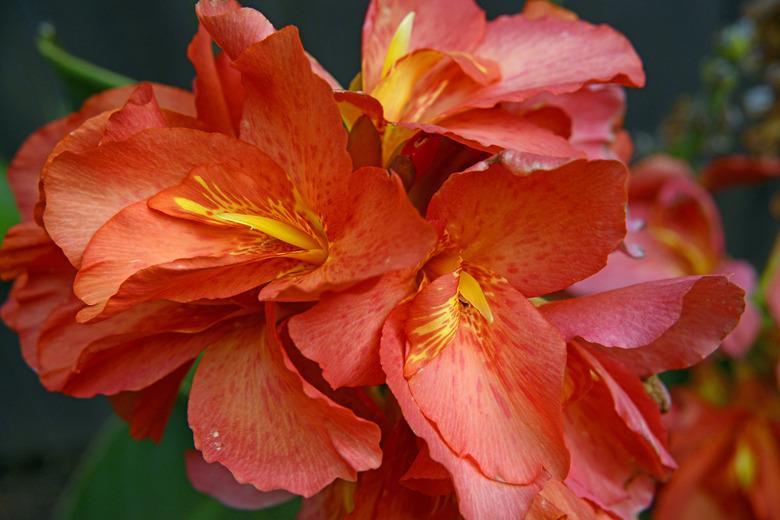How To Keep Canna Lilies Blooming All Season
We may receive a commission on purchases made from links.
Is there a bulb plant more spectacular than the canna lily? These amazing plants offer brilliant blooms from early spring to first frost as well as wide, furled leaves in shades from green to maroon or bronze, often pinstriped and always spectacular. They are easier plants to grow than their fancy blossoms suggest.
Meet the Canna Lily
Meet the Canna Lily
If you live in one of the warmer climates, considering putting canna lily (Canna x generalis) into your bulb garden. These amazing flowers are not really bulb plants but rhizomatous, perennial herbaceous plants that keep producing flamboyant flowers on tall stalks from spring or early summer through the coming of winter. Their colorful leaves are striped and resemble the leaves on a banana tree.
Canna lilies thrive in U.S. Department of Agriculture plant hardiness zones 8 through 12. Anyone in a cooler zone can enjoy their display and remove the rhizomes from the garden to a garage or basement for the winter.
Plant the Canna Lily
Plant the Canna Lily
Plant your canna lilies in a full-sun location with at least four to six hours of direct sunshine to give them their best chance of blooming all season. Try for a spot that is protected from strong winds that can damage the foliage.
Work the soil to 12 inches before planting the bulbs, blending in a couple of inches of compost. Plant the canna lily rhizomes in late spring or early summer. Position each one 1 to 4 inches deep with the growth sprouts (or "eyes") facing up and then cover with 2 inches of soil. Space the plants between 1 and 4 feet apart depending on the size of the blooms. Water well and then cease all water until you see signs of growth. The plants should bloom within 10 to 12 weeks.
Care for Canna Lilies
Care for Canna Lilies
Canna lilies need sufficient water to grow. Soak their soil regularly during the hot parts of the summer unless it rains regularly. During dry spells, they may need water even if it rains a little. Once the rhizomes sprout, never let a week pass without slowly soaking the canna lily soil. A thin layer of organic mulch can help to hold in moisture.
What about fertilizer? If the soil has been improved with compost, feeding isn't necessary, but if you like, you can add a 5-10-5 or 10-10-10 fertilizer in spring and twice during the growing season. Alternatively, use fish emulsion fertilizer or rose or tomato food products.
Each stalk will produce a series of flowers, so encourage this by deadheading faded blossoms. Use a sharp garden pruner. When the flowers stop appearing, cut back the stem. Stop fertilization just before the first fall frost.
The canna's large, lovely leaves can attract insect pests, like aphids or caterpillars. These are not difficult to control provided you remain vigilant.
